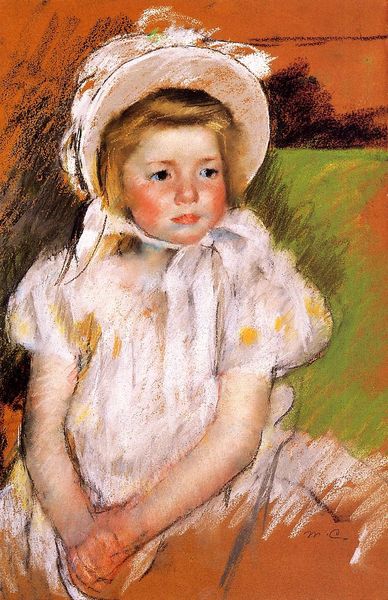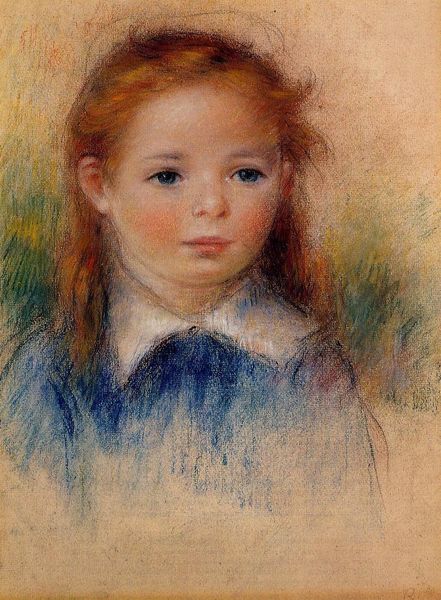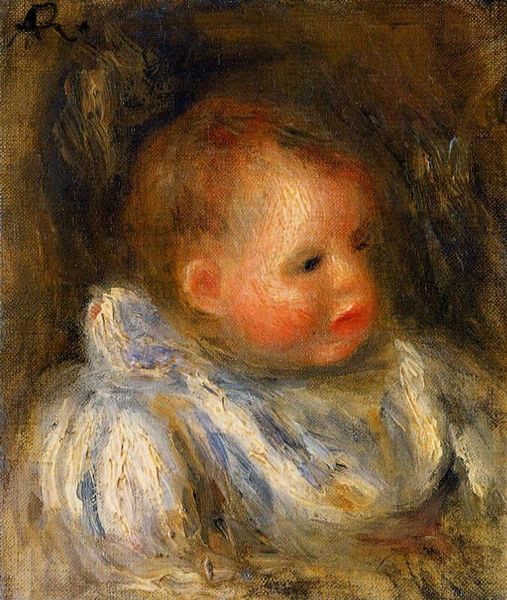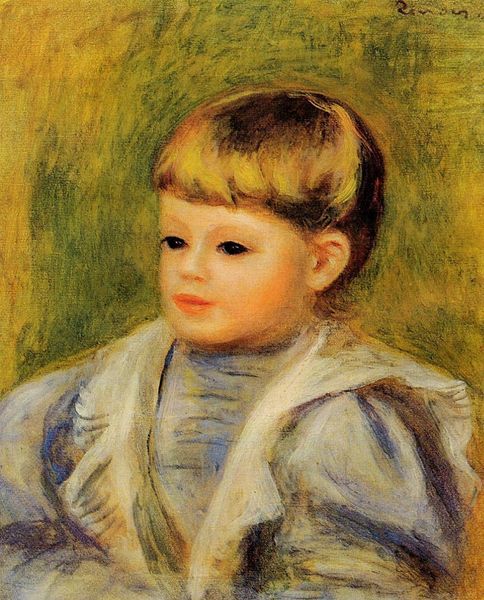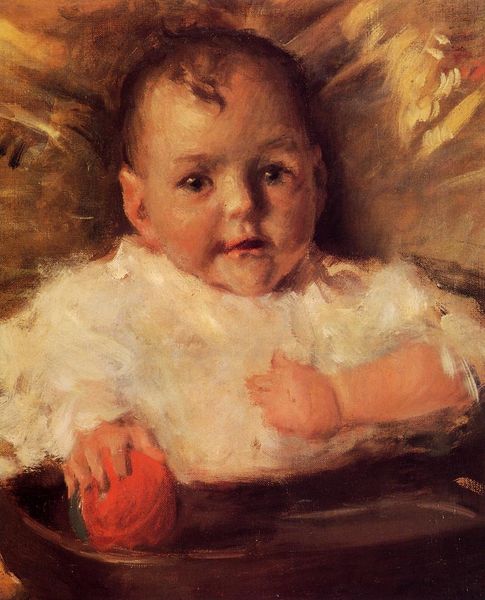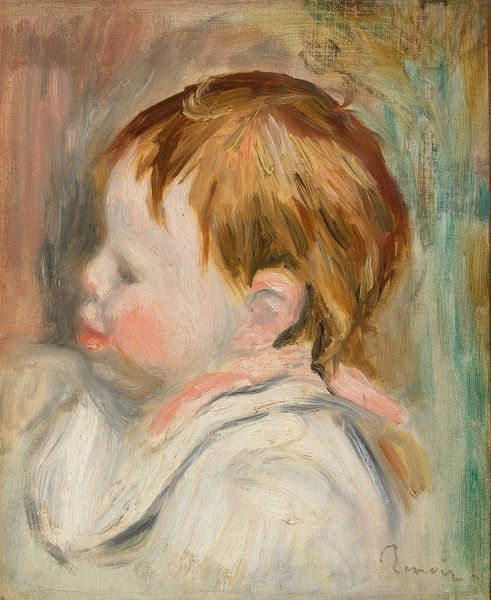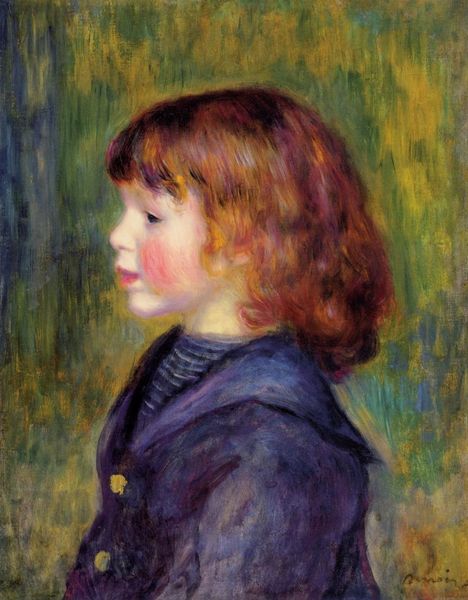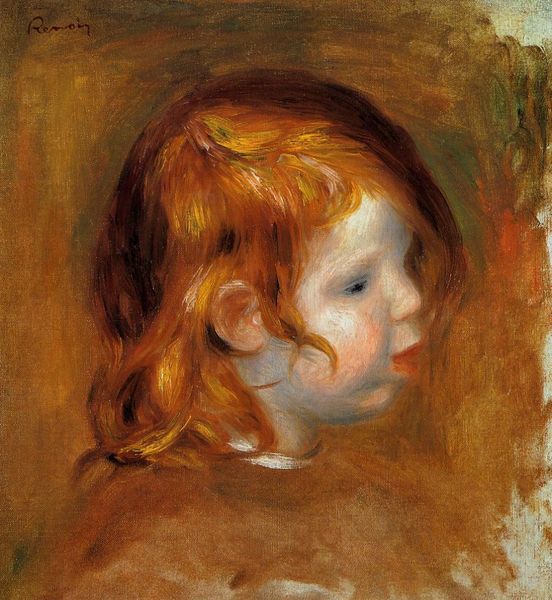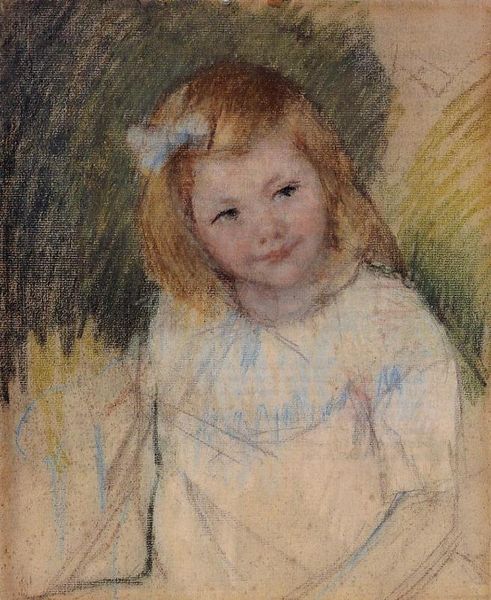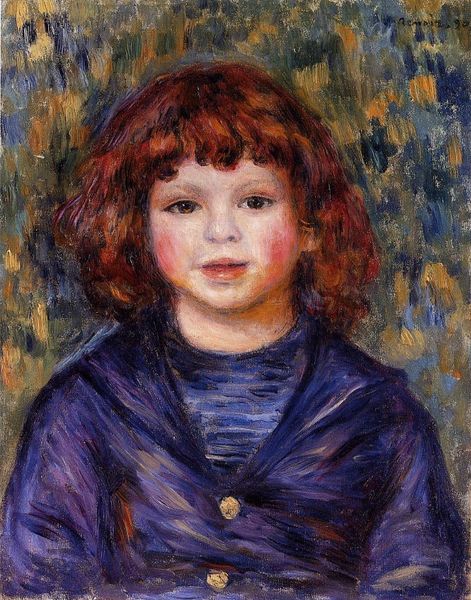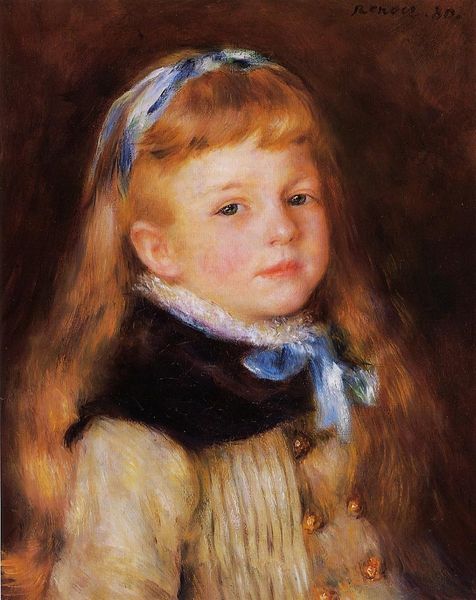
Copyright: Public domain
Pierre-Auguste Renoir's "Portrait of Jean Renoir" captures an intimate glimpse of his son, its creation marked by soft pastels. The work immediately draws you in with its vibrant yet gentle hues. Notice how Renoir uses short, broken strokes of color to define the form of Jean's face, creating a sense of movement and vitality. The juxtaposition of warm tones in the child's hair and cheeks against the cooler blues and greens of the background adds depth to the composition. However, the genius lies in how Renoir uses these formal elements to destabilize traditional portraiture. The loose application of pastel, the lack of precise outlines, and the soft, diffused light all contribute to an image that feels both immediate and timeless. Renoir, here, seems less interested in capturing a likeness than in exploring the play of light and color on form. This approach challenges fixed notions of representation. Consider how the formal qualities of Renoir’s work invite ongoing interpretations and foster a dialogue between the artwork and the viewer.
Comments
No comments
Be the first to comment and join the conversation on the ultimate creative platform.
